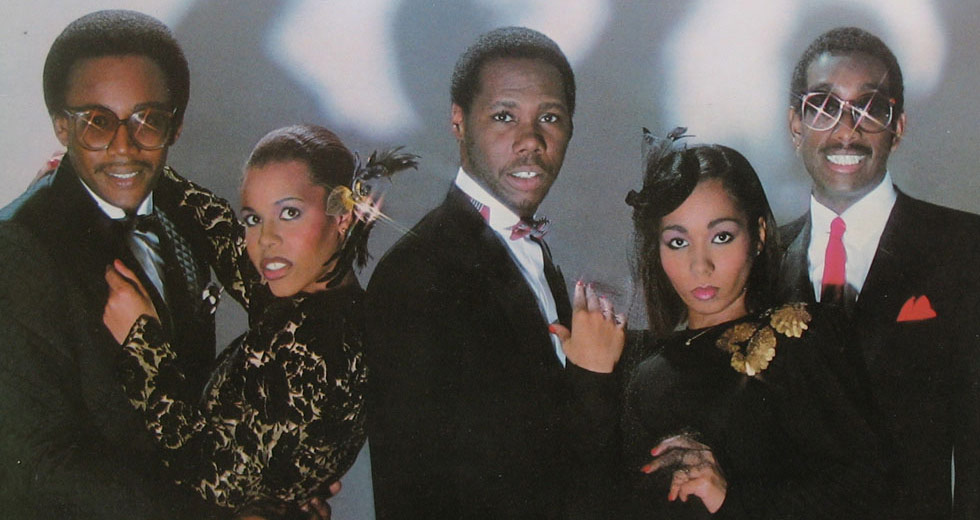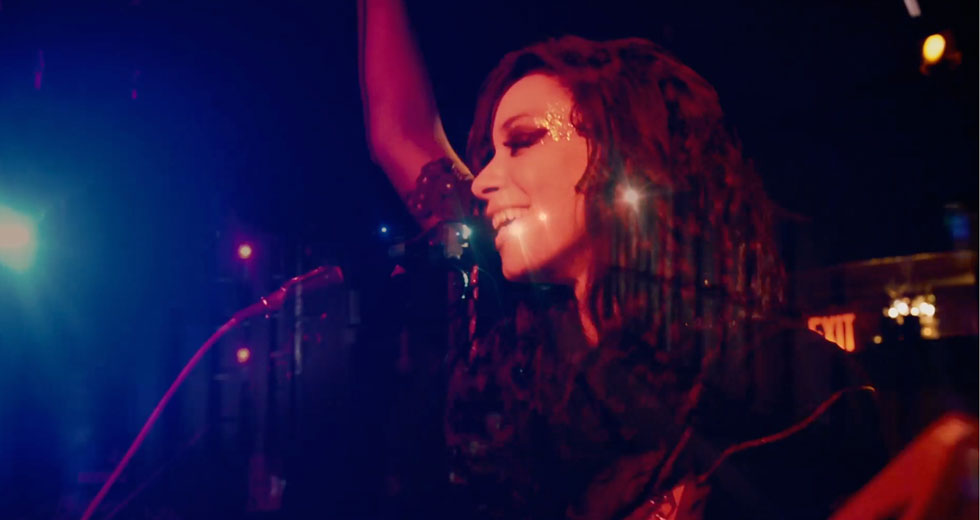Dancing Among the Ruins: The Highs and Lows of NYC Club Culture in the ’00s
In 1926, New York City mayor Jimmy Walker passed a cabaret law that not only stemmed the blare of music at the height of the Jazz Age but also kept white and black dancers from intermingling on the dancefloor. By the 1970s, its enforcement was lax, ushering in a golden if gritty age of New York City dance culture, where disenfranchised blacks, Puerto Ricans, gay men and women and other members of minority cultures could express themselves freely, be it at David Mancuso’s original Loft parties, Larry Levan’s Paradise Garage, The Limelight or elsewhere.
But when Rudy Giuliani was elected mayor in 1994, he enforced that arcane, racist law once more, slowly but methodically strangling the city’s scene. The scandalous case of NYC party promoter and Club Kid founder Michael Alig’s 1997 conviction for the grisly murder of Limelight doorman Angel Melendez didn’t help matters either. As Giuliani’s reign neared its end at the start of the 21st century, there was a bit of hope that Gotham’s dance-music scene might be revived. Only history didn’t quite work out that way.
The fall of the World Trade Center ushered in a period of mourning, and it was only afterwards that club culture slowly began to dig its way out from the rubble – physically, psychologically and politically – and that the resiliency that had defined the city for generations resurfaced. Out of such destruction, a new nightlife experience began to emerge, one that continues to develop to this day. What follows is a collective history of the period since the turn of the century, as remembered by some of the significant characters that have helped sculpt the dance music experience in New York.
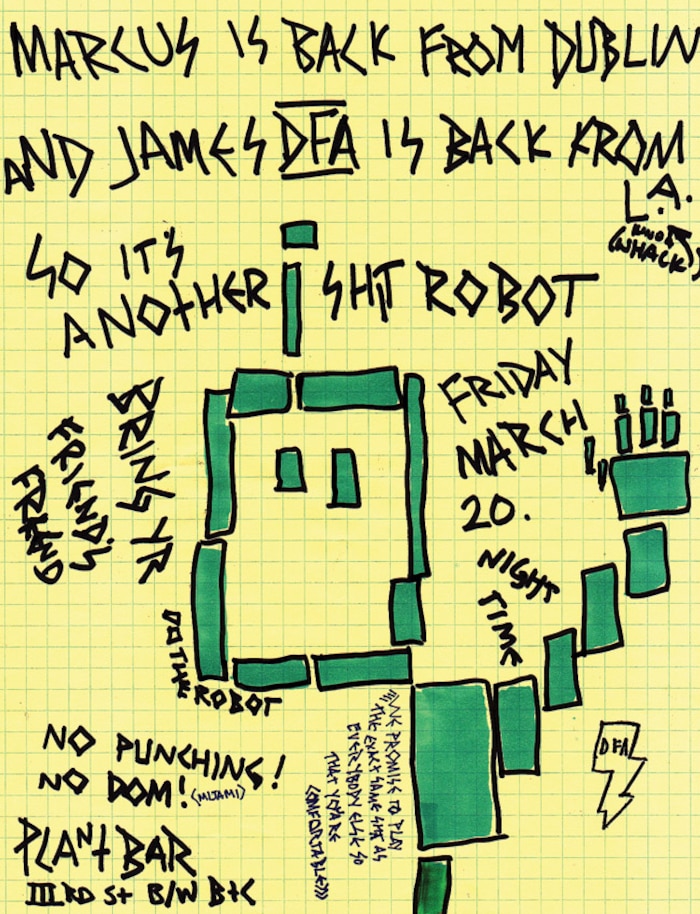
Pre-2001
Larry Tee (DJ, creator of the Electroclash Festival)
Giuliani must’ve known what was happening at all the clubs, and [about] the drugs, but the Michael Alig incident totally dragged it out of the closet. And to be fair, New York is too important of a world center to have a trashy drug-bazaar club scene happening. But the cabaret laws hurt.
Phil South (DJ, No Ordinary Monkey)
It was dire during the Giuliani era. Every bar you went to had the sign up, “No Dancing,” and they were strict about it. Here I was, moving to the birthplace of basically everything cool ever, and it was downer. A lot of the nightlife was really homogenous-looking people: girls in little black dresses and guys in shiny button-downs, really yuppie. Clubs were just meatholes. I think the cabaret laws forced good things further underground. People had to make their own.
Every bar you went to had the sign up, “No Dancing,” and they were strict about it.
Justine D. (DJ and promoter, Motherfucker)
I went to one of the first DFA parties at Plantain Studios in 1999, but DFA existed in name only when that was happening. It’s only in hindsight that I can say it was even at Plantain Studios in the West Village; it wasn’t built out yet. I had known James Murphy because he had been coming to my parties at Life. It felt very raw and it wasn’t in a club space, which is what I was used to at the time. I remember it being extremely dark and I literally stayed 30 minutes because they weren’t playing rock.
Duane Harriott (DJ, Negroclash, Other Music employee)
Around ’96 to ’99, If you were an indie rock fan, the places you went to drink and dance weren’t gonna be playing D-Train or Moroder records. I don’t remember them playing Liquid Liquid at Brownies. Most people who were listening to Pavement records probably weren’t going out to Fashion Week or to see Jeff Mills DJ at Twilo. Those two worlds didn’t really co-exist. You’d never see the indie kids sweat. But the people who were doing that – listening to indie and post-punk – usually became DJs or formed bands.
Dan Selzer (DJ, Acute Records label head)
I felt like there was a pretty strong ghettoization or stratification of music scenes. You’d go hear house music and it was very specific house music and you mostly heard the same type of stuff. You’d go to a techno party and it’d be a different crowd with a different aesthetic and it’d be mostly boring techno. Techno was going down these pretentious no-fun holes. You’d go to rock shows and everyone stood around with their arms crossed.
Tee
Circa 2000, it was the domination of the trance crossover guys, the death march of tribal house at Shelter.
Body & Soul was the first time I heard Fela Kuti on a proper big, old-school New York bone-shaking rig.
Justin Carter (DJ, Mister Saturday Night; ex-booker at Nublu and APT)
Less than a week after I arrived, I was invited to Body & Soul. I knew nothing about club culture, but I remember having a specific moment on the dancefloor where I found myself – an 18-year old kid from North Carolina – surrounded by black, Puerto Rican, all different kinds of dancers from about every ethnic background you could think of. It felt fun and it felt like New York.
South
My first time at Body & Soul was brilliant. They played all classics and it was also the first time I heard Fela Kuti on a proper big, old-school New York bone-shaking rig. Fantastic dancers, top people-watching. But the wall of flesh was a little much – you’d get all wet from the sweaty biceps.
Selzer
Shelter was the big ongoing house/disco/classic party, but Bang the Party was the cool little house party happening at Frank’s Lounge in Fort Greene. Predominately black, but a lot of white hipsters, many techno guys who were getting into disco or house, would go.
Justine D.
We started Motherfucker on Memorial Day of 2000, which blended together rock with what was left of the late-’90s clubkid scene. It happened that way because of the four partners involved. We – myself, Michael T., Johnny T. and Georgie Seville – pulled different people to the party. They were much older than me. Michael and I were the mainfloor DJs. We played “dance music,” which to us meant any type of music that can make you dance as long as it’s not hip hop or Top 40. We really loved mainstream disco, punk and new wave and I was responsible for playing a lot of the new bands, because I was the youngest. We had a melting pot of people, visually and sexually.
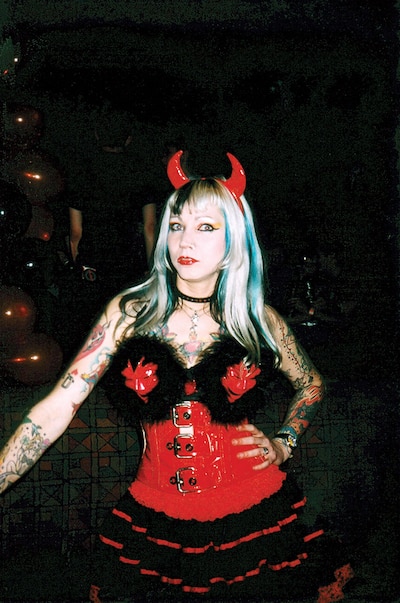
Saidah Blount (producer, NPR Music; former promoter at APT, Santos Party House)
Sunday night was Morrissey night at Sway. That was nuts. There was this camaraderie there as you screamed along to Siouxsie and the Banshees with supermodels like Shalom Harlow, or Damon Albarn and the like; they were just hanging out.
James Friedman (DJ, Throne of Blood label head)
PS1 in Long Island City was a real eye opener. It was always massive. It was amazing for facilitating the coming together of people from wildly different walks of life. There were locals, older art patrons, weirdos, ravers and all manner of other freakazoids at PS1. I ran into my philosophy professor from college there one day and he was less than sober. I feel like we had a really special extra-curricular moment together.
James Murphy
Marcus Lambkin and Dominique Keegan booked Centro-Fly and also ran Plant Bar. In the back I had designed this sound system: it was really inexpensive but it sounded incredible. When tuned, it sounded better than any place in the city. There was this little booth in the back and then three huge black bathrooms with porcelain shelves. It was illegal to dance there.
Suddenly everything seemed to be coming apart and life was no longer secure.
Harriott
I remember going to Plant Bar. Luke from The Rapture used to bartend there. They were like the beginning of the elements that came together and came to be known as the “DFA Sound”: disco, post-punk, house music and indie rock all co-existed in there. Other Music used to do an after-work party on Wednesdays at Plant Bar. It would be two employees DJing and then people like Dean Wareham [of Galaxie 500 and Luna], Ira Kaplan [of Yo La Tengo] would DJ after. But I remember one time Plaid, Prefuse 73 and Lord Sear all just showed up to play records.
Friedman
I was living in Williamsburg in an apartment with a view of the towers. I awoke to panic and from my rooftop saw the second tower fall... For me, that time period was very fraught with anxiety. Suddenly everything seemed to be coming apart and life was no longer secure. That feeling definitely kept me from spending as much time in Manhattan as I had previously – it also pushed me to try and build something locally in Williamsburg.
Blount
It was Fashion Week: Marc Jacobs was happening on Monday night and Tuesday was going to be the first Rocawear show and then a Jamiroquai afterparty at Sway. And I came home from the Marc Jacobs party and passed out and got woken up out of a drunken stupor to the news of the World Trade Center.
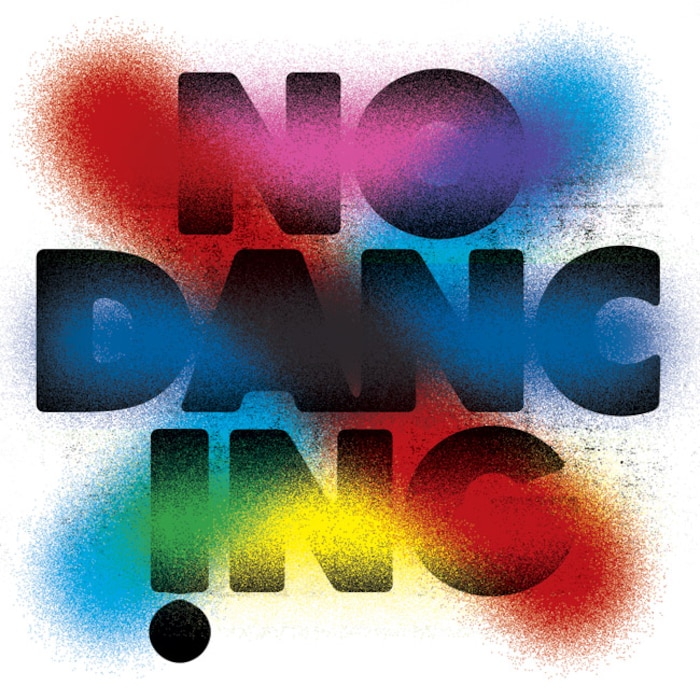
2001 - 2003
Gabby Mejia (promoter for APT, Submercer and Standard Hotel)
After 9/11, everything irrevocably changed. The economy was suffering, people lost jobs. Lots of places – clubs, bars, restaurants – closed down at staggering numbers.
Harriott
Everybody got a glimpse of their own mortality and there was a lot more urgency to create and to dance and to tap into the history of New York City.
Murphy
The idea of a rock band making dance music seems laughable. It’s crazy. The disco that I think is germane came from a gay, black and Latino scene, which is about as punk as it fucking gets. But it wasn’t what indie bands did at all. It was a “Eureka!” kind of a time after 9/11.
Tee
Three weeks after September 11, the Electroclash Festival went off at Luxx.
Selzer
You’d go to some random loft space and see bands like The Rapture and !!! play, and I swear you would see the kids learning how to dance.
Harriott
Rubulad parties in South Williamsburg were fucking firetraps! You’d climb down into this basement and there was literally 1200 people dancing, everybody dressed up. $mall Change would play “Hit Me with Your Rhythm Stick” and then follow it up with “Good to be the King” by Mel Brooks. It just seemed like in there, anything went. There was a booth selling homemade absinthe and it was super psychedelic.
A new level of debauchery arose. You didn’t know when it was going to end and you worried about it every day.
Blount
A new level of debauchery arose. You didn’t know when it was going to end and you worried about it every day. And so a lot of people celebrated it: people threw house parties and loft parties and people went out and danced all night. Drinking and drugs revved back up and that affected the spirit.
Carter
We would go out to these bottle-service places in Midtown, before Marquee opened up. It was all about spectacle, but not in an amazing way; it was people spending a lot of money and passing out a bunch of drugs so as to be a spectacle themselves, people grasping to feel important.
Tee
2 Many DJs were scheduled to play a warehouse party in Bushwick, but police suddenly shut it down, so they came over with James Murphy and banged out an amazing set with us at Berliniamsburg.
Blount
It was a crazy circuit on the weekends: The Hole, APT, Passerby or maybe Tribeca Grand, and then on Saturday it’d be Luxx. Luxx was intense: glammy, neon, with lots of Lycra, and it was packed to the gills. People would be on top of bars and on friends’ shoulders.
Jason Drummond (DJ Spun, Rong Music, former booker at PS1)
I came out from San Francisco in 2002 to take over PS1’s Summer Warm Up series. DJ Harvey came out the first year and captured the sound and feeling that a lot of people were looking for after September 11. It was open-minded and he was mindful of the spirit of the party. We just wanted Warm Up to be a dance party where everyone would participate, rather than a see-and-be-seen social event.
Prince Language (DJ, Negroclash, The No Comprendo)
The phenomenon of the boutique hotel took off in the early 2000s with the Grand Hotels, which were one of the earliest proponents of the electroclash/DFA/2 Many DJs scene, especially at the Tribeca Grand.
Carter
Tribeca Grand: what a dumb idea. I even DJed there, but those rooms were never meant to have music played in them. It was the epitome of a luxury-brand tapping into an existing scene to try and make itself cooler.
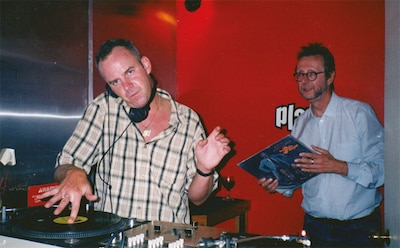
Murphy
Marcus booked Centro-Fly, so all the big DJs from Europe – Chemical Brothers, Fatboy Slim, etc. – would play Plant after hours.
Blount
[Plant Bar] would lock you in late at night. If the party was good and still going strong, they would pull down the front gate and you would have to stay all night. I’d have to be at work in the morning, but I’d stay all night.
Tim Sweeney (DJ and host, Beats In Space)
If the police ever showed up [at Plant], there was this blue light in the back DJ booth that the doorman would trigger, so we knew to kill the music or put on something non-dancey so that everyone would stop dancing.
Justine D.
I booked The Rapture at Motherfucker in 2002. That was a rough one for us. There was a hip hop party downstairs and that group tried to beat The Rapture up. And a girl almost got raped in the bathroom. It was a bad one.
Blount
Motherfucker was a weird mix of New York: drag queens, gay-friendly – but not square-friendly. That was one of the last big parties that wasn’t about bottle service or about celebrity.
Eamon Harkin (DJ, Mister Saturday Night)
The drag queens and podium dancers were the most outlandish aspects of Motherfucker. And then there was Michael T.! I don’t think there’s been as flamboyant a DJ playing out in NY since.
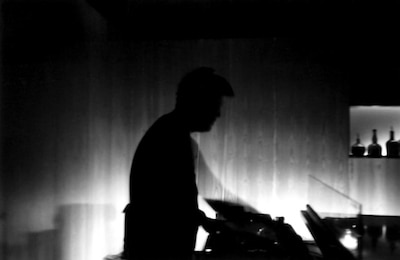
Mejia
With APT, it worked in its favor that it survived that dark period post-September 11 because it really became the underground music Mecca of the city.
Blount
There was a no-request policy at APT, which was unheard of at the time. I would be at Bungalow 8, a big celebrity club, and one time Puffy Combs went up to ask the DJ to change the music. That attitude at such clubs bred this mentality. But APT didn’t allow that.
Harriott
All of these crazy DJs had residencies at APT. DFA and Metro Area did something there. Theo Parrish had a residency, Rich Medina, and Bobbito, and then on Saturday nights, it’d either be Dennis Kane or Chairman Mao with Keb Darge playing raw soul there. And Sunday night was a huge gay party. Theo’s first night at APT, he made everybody turn off all the lights and he played Ugly Edit Vol. 2’s Harold Melvin and the Blue Notes’ “The Love I Lost.” Derrick Carter was there and said, “Anytime you play something that I love, you have to do a shot of tequila with me.” We finished the bottle and somehow Theo ended up putting APT’s general manager in a chokehold. [And] he still got a monthly.
Blount
Passerby was one of my hangouts. [Artist and DJ] Spencer Sweeney had a residency, Eric Duncan, Dash Snow, Björk was always there, the kids from Surface to Air. It was a well-educated, savvy creative class that wasn’t afraid to hear deep house mixed into punk and disco and electroclash. It had a disco floor like out of Saturday Night Fever and it got verrry sloppy.
Thomas had his pants around his ankles, dancing around in his boxers to the song with everyone up on stage.
Harriott
Thomas and Eric – before doing Rub N Tug – were doing these parties in a loft off of Canal Street. I walked into one and Eric was playing “New Bell” by Manu Dibango and Thomas had his pants around his ankles, dancing around in his boxers to the song with everyone up on stage. And then Rub N Tug was at Passerby every Saturday night throwing their Campfire party.
South
Passerby was seedy and dirty with rampant drug use. They would just lower the gate and lock the door and no one gave a fuck. So one night we’re hammering on the gate, yelling: “I’m a friend of Thomas and Eric’s! Let me in!” And the door guy grabbed me by the throat and pushed me away, growling, “Everyone who comes here is a friend of Thomas and Eric!”
Friedman
Max Pask used to call that party “Church” because he ended up there every Sunday morning.

2004 - 2006
Justin Strauss (DJ, Mudd Club, Danceteria, the Ritz)
The whole DFA and Plant Bar scene really revitalized things musically, giving New York a “sound” again. So it was great when clubs like Cielo – and later on, Love – opened and focused on installing state-of-theart sound systems, something that had taken a back seat when clubs and bars started popping up all over again.
Kieran Hebden (Four Tet, part-time New York City resident)
Cielo has nice sound for sure but it’s also got bottle service, more likely to attract a real-estate broker on a night out than a raver who wants to get lost in a dark room and have their mind blown.
Friedman
One cold January night in 2004 at Tribeca Grand it was Optimo, Headman and Erol Alkan, who played these unmixed stems of “How Soon Is Now” he had somehow scored. That sort of show could never have happened without the hotel providing free rooms and fees for the DJs.
Jorge Velez (Professor Genius)
Theo Parrish showed up at APT before this big blizzard. He played to about 25 of us during the snowstorm [with] that room slowly filling to capacity as the night progressed. Everyone braved the storm just to dance to Theo.
Zev Eisenberg (Wolf + Lamb, Marcy Hotel)
The Bunker at subTonic was an underground dream. Bryan Kasenic was bringing this underground minimal sound and it was one of most innovative nights we knew of. They had these cut-open wine vats you could climb in and get comfy, do drugs or make out. [That’s where] we got to know the lay of the underground that shaped up to dominate the next couple of years.
Justine D.
Motherfucker rose really fast. Our first party was 400 people, then a year later we were over 1000, and it kept getting bigger, drawing 3,000 people during our peak. You could get away with all the wonderful things that make nightlife so decadent and debaucherous then: drugs and full-on sex. I saw girl-on-girl and guy-on-guy sex out on the dancefloor at those parties. We were able to mix sexualities and subcultures together.
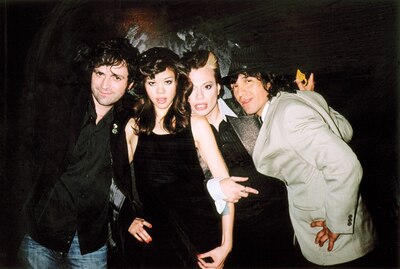
Carter
I wasn’t as taken by Motherfucker as I was taken by The Loft. We walked in and that blew my mind.
Sweeney
Going to see David Mancuso at The Loft was more eye-opening to me than anything else in NYC. The sound system gets the vibe just perfect. And the dancers don’t dance like that in any other part of the world. The Loft remains something special.
Mejia
Piano’s opened, and there were great parties at subTonic like the Bunker. Henry Lau threw an amazing, smoke-filled indie party at Orchard Bar. I remember a few other good, random hip hop and dancehall parties too, but they were small and it’s hard for parties like that to survive. And then Volume in Brooklyn opened.
Friedman
Volume was a cavernous warehouse that was conceived as a sort of modular event space. Unfortunately, nobody ever put the money into the place to really deck it out so instead of couches, there were just piles of bare mattresses lying around. It was kind of gross in there, but some of the programming was incredible: one time, Terry Richardson held a casting for a Suicide Girls pinup calendar there. Dizzee Rascal played on a flat-bed truck. There was a big rave featuring Superpitcher, Miss Kittin and Michael Mayer.
Justine D.
Like any club, it was mismanaged and the owner didn’t get it and so Volume closed within a year.
Strauss
Centro-Fly closed at the end of April 2004, with Junior Sanchez, Todd Terry, Fatboy Slim and myself finishing up the night. The last night was billed as the funeral for the club. After Todd Terry’s set, a full-on funeral procession came through the jam-packed dancefloor, complete with a coffin. When they got up to where the DJ booth was Fatboy Slim popped out of it and everyone went nuts. Centro-Fly was yet another sad casualty of real-estate wars and bottle-service venues.
Tee
The Misshapes [Geordon Nicol, Leigh Lezark and Greg Krelenstein] were the first to jump on the guest fashion-celebrity-and-rockstar-as-DJ thing in New York. They were born fashion stars.
It was like Cheers with drugs.
Blount
The Misshapes party was flash over substance. It was about the scene and fashion rather than the DJing. They knew who their crowd was though. When Madonna chose them for her “DJ gig” at Luke and Leroy’s in the West Village in 2005, people lined up for blocks.
South
We started No Ordinary Monkey in a little basement before moving to the China Room in the Financial District where Wall Street guys gathered to smoke and gamble after work. They had a lunch tray with not great-looking Chinese food. It was the place you would go to last and stay. People would show up at two in the morning and three was peak hour. We could just go ’til whenever.
Jill Bradshaw (I Heart NY, No Ordinary Monkey promoter)
It was a great spot for all of our friends to go and dance until 6 AM. We could take it over, bring in sound, add smoke machines and disco lights. It was an instant dance party.
Eisenberg
We started doing these small parties all over the LES, but our sound and vision kept on clashing with what bar owners wanted. It was clear we needed to get our own space. One day a friend showed us this dump of a space in what was still a really shitty part of Williamsburg. We signed a lease and renovated it ourselves.
Hebden
Probably the best club-type event I’ve been to in NY was PS1. That had a proper atmosphere and large crowd that was really into it. Seemed like that only works in the summer though.
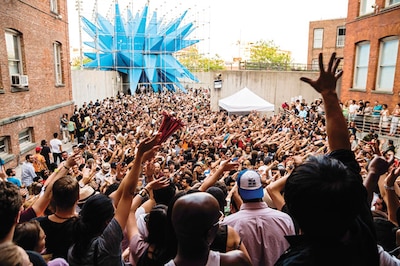
Drummond
PS1 soon got to the point where the facility wouldn’t allow for expansion and there were 7,000 people coming out each time and it was uncomfortable. Still fun, but there was a directive to make it less accessible, with more experimental music like Psychic TV and James Chance.
Carter
I started going to Todd P’s punk rock shows and loft parties that were happening in Bushwick. I didn’t necessarily love the music but that’s where I thought, “I could do this. I can take part as an audience member, but I can also go out and find a space and do something like this. I’d love to do something like this.”
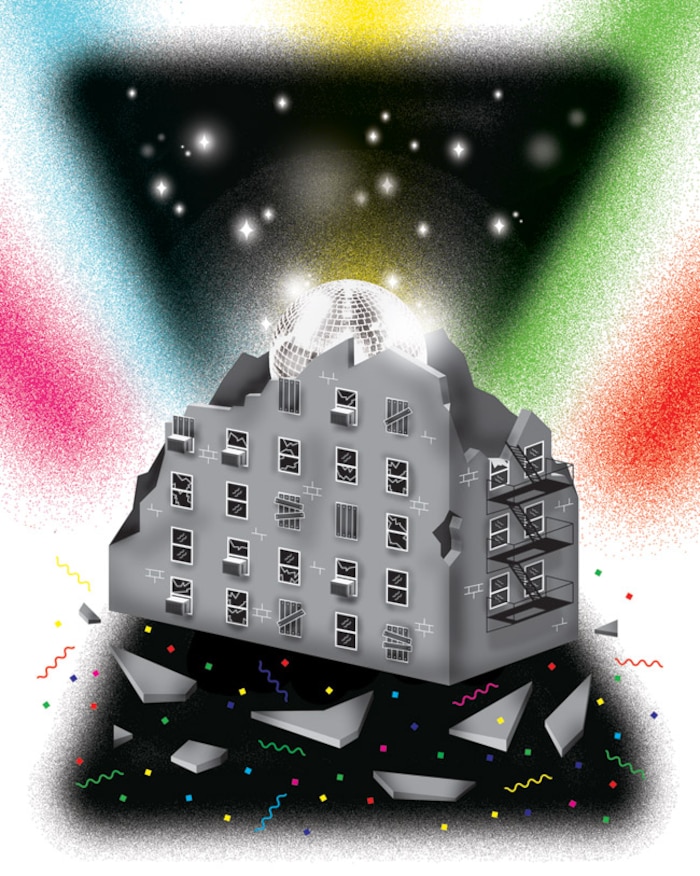
2007 - Present
Harriott
The reason parties moved out to Brooklyn is because of space. The city’s really expensive and the only people who can afford to open a bar or club in Manhattan aren’t doing it for a reason other than making money. And soon people our age were getting pushed out of downtown.
Bryan Kasenic (DJ and promoter, the Bunker)
The Bunker moved when Tonic closed. At that point all of my friends were living in Brooklyn and I barely knew anyone living in Manhattan, so moving the party over here was a no-brainer for me.
Harriott
APT was a wild place. The thing that you loved about it was also the thing that you just knew was going to be its downfall. When you went in there, it was pretty much anything goes. You’d look around and go, “This is great, but ain’t no way this can last.” It was just too perfect.
Justine D.
By the end of Motherfucker, we all hated one another. We had our last one on Halloween 2007 at Downtime and I was disenchanted with throwing a party in Midtown. Greenpoint at the time was full of young people, but no one hung out there. There was a Studio A in Miami and they opened Studio B there. My vision for Studio B was simple: I wanted it to be like the Haçienda. That was my goal.
Blount
The idea of having a club in Brooklyn seemed amazing. At one point, it seemed like every major French house music party was at Studio B: the Daft Punk afterparty was packed to the gills and everyone was in such a great mood. The DFA parties were all there: James Murphy, The Rapture, Hercules & Love Affair. It was a blast.
Sweeney
I opened for Carl Craig [at Studio B] one night and he was standing behind me in the DJ booth with his arms crossed. I was so nervous. I dropped [A Number of Names’ 1981 Detroit anthem] “Shari Vari” and he gave me a compliment, saying that intro is hard to mix properly. I was so happy after that.
My vision for Studio B was simple: I wanted it to be like the Haçienda.
Friedman
Love in the West Village had been around for a few years but it really turned a corner around this time. DJ Harvey always played there and for my 30th birthday party, we brought in Todd Terje. That club never really found its place in the city, but it boasted the single best DJ booth and sound system I’ve ever played on.
Blount
I was allergic to how much dust was inside of Love and the carpet room there skeeved me out. The sound was perfect though – I understand why DJ Harvey loved spinning there.
Justine D.
I hung out in that bearded disco scene for a while: My Cousin Roy, Jacques Renault, Doug Lee, Justin Vandervolgen, all orbiting Harvey. I loved all that music and those guys, but after awhile, I felt like these parties had no element of sexuality to them, which is what really fuels nightlife. They were essentially playing music made by gay black men for a very straight white male crowd. No one was really dancing but they were playing such good dance music.
Blount
The people involved with Santos Party House were looking historically at who pushed nightlife and the culture forward: people that were all inclusive, uptown and downtown, music, art, fashion and pageantry, giving props to gay culture. That was Santos’ ideal, bypassing bottle service to make something that felt like family. They were thinking about how to bring the spirit of the creative class contributing back to the nightlife of the city.
Harkin
Mister Saturday Night began as the in-house weekly Saturday night party at Santos Party House, but we quickly adjusted that vision, in part due to the experience of working there. We focused instead on creating an alternative end-to-end experience centered on building community in Brooklyn.
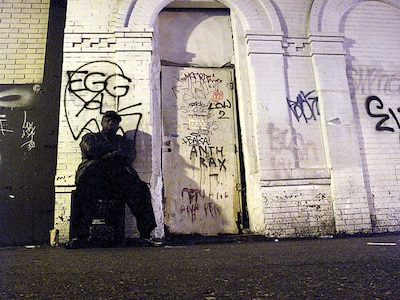
Carter
The very first Mister Saturday Night we did outside the confines of Santos was at the Market Hotel in Bushwick with Dixon. Immediately, we went “Yes, this is it!” It just felt really good.
Hebden
The Mister Saturday Night and Mister Sunday parties are great and I’ve had good times playing there. They seem quite committed to keeping it underground.
Carter
We have done parties at 12-Turn-13 for three years now. With a big floor dedicated to dancing and a big rooftop, it feels like home.
Harriott
I went to one party at 12-Turn-13 and these dancers stripped down to nothing with this big jar of honey with them. And they just started smearing it on one another, then licking it off. And I’m like “Alright, guess I’ll stick around for a minute.”
Aurora Halal (producer and visual artist, Mutual Dreaming)
I moved to New York in 2007 and went to a few great shows at Santos, Studio B, Love, Le Bain, Public Assembly, etc., but it was never a particularly personal or meaningful experience for me. There’s a trough-like quality to a lot of nightlife that’s very commercial, alcohol and status-centered.
I kept seeing drunk guys using Serato to DJ and there were hardly any girl DJs in New York at the time. I knew that I could do it better.
Justine D.
A boutique hotel’s number one priority is to make money. They view these lounges and clubs as their outlet to maintain a cool clientele. These venues have money and they pay more money to DJs than a bar or club, and it’s a smart business model, but you’ll never feel like it’s underground. It won’t have that rawness, it won’t have that sense of community. It’s a different beast.
Sweeney
The girls are super cute and that’s about the only thing good about the boutique hotel parties. You end up having a lot of people requesting terrible music. They’re just there for the scene.
Venus X (DJ, GHE20G0TH1K)
I went to the Wierd parties at Home Sweet Home, I went to punk shows, I went to my friends’ hip hop showcases, I went to Kingdom’s parties. I kept seeing drunk guys using Serato to DJ and there were hardly any girl DJs in New York at the time. I knew that I could do it better.
Blount
GHE20G0TH1K was a place for young creative gay kids of color to come together to create a space where they felt welcome. It was this group, young, gay, lesbian, straight, black, white, Asian, all mashed up together at the party. They applied a lot of hip hop techniques to electronic music, chopping and twisting the tracks, screwing down voices and such. I went to one at Orchard Bar and then they went out to a hot sweaty basement in Bushwick.
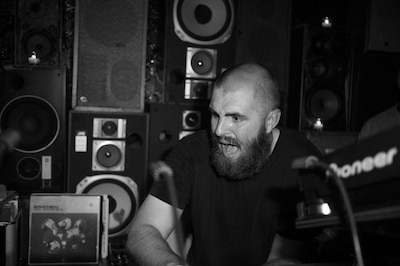
Halal
Dope Jams parties were the best: the music was superbly deep, it was hot as hell and the sound system felt like it was literally pushing the air with heavy bass. It’s a shame that they closed. I prefer 285 Kent and other DIY venues because they’re great raw slates; they feel like safe spaces away from the bombardment of NYC’s social hierarchies.
Strauss
People will always compare everything to the so-called “golden era” of New York club life. And it’s true that was an amazing time, but there were and still are many great clubs in this town. Now with Output opening in Brooklyn with a world-class sound system, hopefully a new generation is able to experience what a proper club experience should be.
The Internet has had the greatest, and arguably most detrimental, effect on NYC.
Prince Language
The Internet has had the greatest, and arguably most detrimental, effect on NYC. Pre-Internet, it can be reasonably be stated that most dance music was primarily heard in dance clubs, by people dancing in a specific, communal context. People went to clubs to hear music that could only be heard there. Actual physical spaces like clubs simply don’t matter as much – this has diminished the power of both the spaces and the music played within them. Clubs may not be the center of dance music anymore.
Murphy
Now things seem to be a lot more stabilized. It’s a lot more like it was at the start of the 21st century: rich people go to these hotel parties, Brooklyn’s this self-formed ghetto where people just stand around. It’s become a lot more codified. But back then, it felt crazy and alive and really mixed up. It doesn’t feel the same to me right now. Everything felt smaller and nice back then.
A version of this article appeared in The Daily Note, a free daily newspaper distributed in New York during the 2013 Red Bull Music Academy. Header illustration: Adam Garcia.
